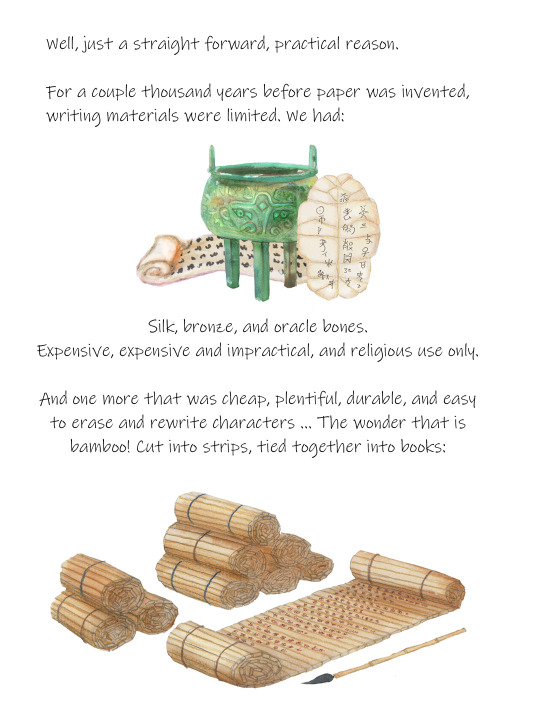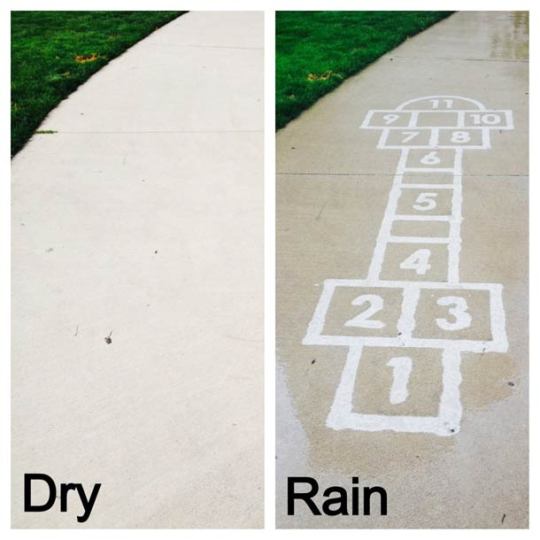Hetalia. Touhou. Whovian. Sherlockian. Anime. Manga. Music. Math. Languages. Thing dump.
Don't wanna be here? Send us removal request.
Photo

I found this online and I love it.
33K notes
·
View notes
Text
honestly I’m surprised that no one in the language community has created a tumblr where people can send in recipes from their country/region/etc. not to be lame as fuck but food is such a connecting force and can tell you a lot about the culture/people/language and it’s also nice to see similarities in meals and try new things.
263 notes
·
View notes
Photo





The vast majority (around 80%) of Chinese characters are made up of a radical (the general meaning) and a phonetic.
Radical 女 nǚ (woman) and phonetic 馬 mǎ (horse) = 媽 mā, mother (your mum sounds like a horse).
But a small minority are pictograms, that is to say a picture of the thing they represent.
Pictograms are the earliest characters, thousands of years old, but many are still used every day.
If you look at the oracle bone script for rat, tiger and elephant you’ll see they are clearly pictures of the animal they signify.
But if you look at the modern versions, you’ll notice something odd, they’re all rotated 90 degrees onto their sides.
Why? Why are all these characters written with the animals balancing on their tails?
Well, it’s for a straight-forward, practical reason.
For a couple thousand years before paper was invented writing materials were limited. We had silk (expensive), bronze (expensive and impractical), and oracle bones (religious use only).
And one more…
That was cheap, plentiful, durable, and easy to erase and rewrite characters. The wonder that is…
Bamboo!
It was cut into strips, and tied into books. Long thin strips of bamboo contributed to the Chinese custom of writing vertically, from top to bottom (and right to left).
But it also meant that it’s much easier to write some characters length-ways so that they easily fit onto the strip.
So that’s it, mystery solved. That’s why a lot of Chinese picture characters are written at a right angle.
5K notes
·
View notes
Text
Superlinguo 2020 in review
2020 felt like a year of lurching from one chaotic moment to another. Particular low-lights included attempting to teach with a toddler underfoot, and that small matter of a global pandemic. Putting together the collection of things I did and wrote this year, it all feels a bit surreal. Many of these things were written frantically in those months when daycare was open, or at 5am before the hurricane awoke.
Crash Course
One of my biggest projects for 2020 was working with Gretchen McCulloch to co-write the 16 scripts for Crash Course Linguistics, from Complexly and PBS. This series will wrap up in January. The full playlist is available on YouTube with English closed captions. The 16 episodes (and links to the accompanying Mutual Intelligibility post with additional resources):
Week 0 - Preview (MI post)
Week 1 - Introduction (MI post)
Week 2 - Morphology (MI post)
Week 3 - Morphosyntax (MI post)
Week 4 - Syntax (MI post)
Week 5 - Semantics (MI post)
Week 6 - Pragmatics (MI post)
Week 7 - Sociolinguistics (MI post)
Week 8 - Phonetics, Consonants (MI post)
Week 9 - Phonetics, Vowels (MI post)
Week 10 - Phonology (MI post)
Week 11 - Psycholinguistics (MI post)
Week 12 - Language acquisition (MI post)
Week 13 - Historical linguistics and language change (MI post)
Week 14 - Languages around the world (MI post)
Week 15 - Computational linguistics (MI post)
Week 16 - Writing systems (MI post)
Mutual Intelligibility
Lingthusiasm launched Mutual Intelligibility in March 2020 to help connect linguistics instructors to curated linguistics content as teaching rapidly moved online. We produced 6 Resource Guides in collaboration with Kate Whitcomb (Layman’s Linguist) and weekly 3 Links posts, mostly edited by Liz McCullough. Mutual Intelligibility resources were also created to support each of the 16 Crash Course videos.
Introduction to IPA Consonants - Resource Guide 1
Introduction to IPA Vowels - Resource Guide 2
Introduction to Morphology - Resource Guide 3
Introduction to Constituency - Resource Guide 4
Introduction to World Englishes - Resource Guide 5
Introduction to Linguistic Diversity - Resource Guide 6
See more Mutual Intelligibility posts here.
LingComm grants
Lingthusiasm ran the first round of LingComm Grants in 2020. You can find out more about these $500 grants, and our four winners, on the lingcomm website. The four LingComm Grant winners:
The Black Language Podcast (Anansa Benbow)
Nonbinary Linguistics youtube channel (Nina Lorence-Ganong)
Jazicharnica (Јазичарница) blog (Nina Tunteva and Viktorija Blazheska)
War of Words podcast (Juana de los Santos; Angela Makeviciuz; Antonella Moschetti; Néstor Bermúdez)
Lingthusiasm
As well as the Mutual Intelligibility and LingComm Grant projects, the Lingthusiasm team continued to produce monthly main and bonus episodes. All episodes of Lingthusiasm are ad free, and all come with transcripts:
2020 Lingthusiasm main episodes
Making machines learn language – Interview with Janelle Shane
This time it gets tense – the grammar of time
What makes a language easy? It’s a hard question
The grammar of singular they – Interview with Kirby Conrod
Schwa, the most versatile English vowel
Tracing languages back before recorded history
Hey, no problem, bye! The social dance of phatics
The happy fun big adjective episode
Who you are in high school, linguistically speaking - Interview with Shivonne Gates
How translators approach a text
Climbing the sonority mountain from A to P
Small talk, big deal
2020 Lingthusiasm bonus episodes
What might English be like in a couple hundred years?
Generating a Lingthusiasm episode using a neural net
Fake Bonus 3 - LingComm, Discord, Merch, Claire
Teaching linguistics to yourself and other people
When letters have colours and time is a braid - The linguistics of synesthesia
A myriad of numbers - counting systems across languages
Doing linguistics with kids
Tones, drums, and whistles - linguistics and music
LingComm on a budget (plus the Lingthusiasm origin story)
The quick brown pangram jumps over the lazy dog
The Most Esteemed Honorifics Episode
Crash Course behind the scenes with Jessi Grieser
Q&A with lexicographer Emily Brewster of Merriam-Webster
Lingthusiasm now has a Discord server for patrons, a place for people who are enthusiastic about linguistics to find each other and talk!
Top Superlinguo posts in 2020
It was only a few years ago that these annual blog posts would just list a bunch of things I’ve written on Superlinguo. Now it’s only one of the categories of things that I do, but I still enjoy keeping the blog going. When I look back at the year it always makes for a nice record of things that I was working on outside of academic publications, and things that I was thinking about that did not become bigger projects.
Posts about doing linguistics communication:
Vowel terminology - high/low vs open/close
3 things I learnt about PhD supervision from midwives
Practical advice for if you want to start a podcast
Communicating Research: An online self-guided slide set
Posts about linguistics books
Superlinguo linguistics books list - fiction and non-fiction
Linguistics Books for Kids - the Superlinguo list
Review: Rooted, An Australian History of Bad Language by Amanda Laugesen
Posts about other things, including projects:
New draft emoji include 3 proposals I co-wrote!
Shadowscent Updates: The Darkest Bloom in many languages, Crown of Smoke pre-order, map and… a perfume
Authors for Fireys - I’m auctioning a conlang on Twitter to raise money for the bushfires this week!
Superlinguo Seasonal Gift Guide 2020
Linguistics Job Interviews
There are now over 50 interviews in this series. You can see the full list here. Some of the interviews have also been featured in For The Love of Language (an intro to linguistics textbook). The 2020 interviews:
Interview with a Developer Advocate
Interview with an ESL teacher, coach and podcaster
Interview with a Juris Doctor (Master of Laws) student
Interview with the Director of Education and Professional Practice at the American Anthropological Association
Interview with a Research Coordinator, Speech Pathologist
Interview with a Freelance Writer!
Interview with a Dance Instructor and Stay-at-Home Mom
Interview with a Transcriptionist
Interview with an Exhibition Content Manager
Interview with a Community Outreach Coordinator
Other things around the internet
This is a very incomplete list of miscellaneous internet things. These are either talks or things I did with others, or places where my work was referenced by others.
Emoji as Digital Gesture: Why Internet Linguistics Matters (Abralin plenary)
Sustainable Academia: The Way Forward (Abralin panel)
Linguistics Podcasting panel for Linguistics in the Pub, feat. Lingthusiasm, Vocal Fries and Because Language (youtube)
The Rhys Show #73 (podcast interview)
Lockdown Linguistics: Fake Accents (podcast interview)
Playopolis Episode 2: How to read a city; and Melbourne’s ‘untranslatable’ words (podcast interview)
Why Do We Move Our Hands When We Talk? (Tom Scott video)
Which Is “Bouba”, and Which Is “Kiki”? (Tom Scott video)
The Tromsø Recommendations for Citation of Data in Linguistics (Linguistweets twitter thread)
Gretchen featured in an xkcd comic
Academic articles in 2020
The weird thing about academic publishing is that it takes a couple of years for something to go through review and publishing. On paper 2020 was an exciting year for my research, with lots of work in print. The problems with 2020 research won’t really hit until 2021-2022. Special mention to the article in Gesture, which is dated 2019, but only came out this year:
Gawne, Lauren, & Hildebrandt, Kristine A. (2020). Reported speech in earthquake narratives from six Tibeto-Burman languages. Studies in Language, 44(2), 461-499. [Open Access version][published version][blog summary]
Gawne, L., G. Roche & R. Gamble. (2020) “The bus doesn’t stop for us”: Multilingualism, attitudes and identity in songs of a Tibetic community of Nepal. Multilingua. 1-31. [Open Access version][published version][blog summary]
Davis, A. E., Gamble, R., Roche, G., & Gawne, L. (2020). International relations and the Himalaya: connecting ecologies, cultures and geopolitics. Australian Journal of International Affairs, 1-21. [Open access article][blog summary
Gawne, Lauren. Looks like a duck, quacks like a hand: Tools for eliciting evidential and epistemic distinctions, with examples from Lamjung Yolmo (Tibetic, Nepal). (2020). Folia Linguistica, 54(2): 343-369. [Open access version][published version][blog summary]
Gawne, Lauren, Chelsea Krajcik, Helene N. Andreassen, Andrea L. Berez-Kroeker & Barbara F. Kelly. (2019) Data Transparency and Citation in the Journal Gesture. Gesture 18(1): 83–109. [Open Access version][published version][blog summary]
The year ahead
In 2021 nothing changes and everything changes: I’ll still be at La Trobe but I’m now on a permanent/ongoing contract (analogous to ‘tenure’ in the Nth American context). It’s going to take a while to really come to terms with the fact I can now plan long term projects with certainty, and no longer do I have to give over part of my brain to worrying where I’m going to end up next year, every year. I’m trying to not take on new projects, but just keep working on exciting things that are happening and think about where I want to take them.
Previous years
Previously these posts were named after the year ahead, but they were a look back at the year we just had. I’ve decided to refresh this from this year (it’s never to late to reconsider a habit!):
Superlinguo 2020
Superlinguo 2019
Superlinguo 2018
Superlinguo 2017
Superlinguo 2016
290 notes
·
View notes
Text
dropbox containing linguistics textbooks
contains 34 textbooks including etymology, language acquisition, morphology, phonetics/phonology, psycholinguistics, sociolinguistics, & translation studies
dropbox containing language textbooks
contains 86 language textbooks including ASL, Arabic, (Mandarin) Chinese, Croatian, Czech, Danish, Dutch, Estonian, Farsi, French, German, Greek, Hebrew (Modern & Ancient), Hindi, Hungarian, Icelandic, Italian, Japanese, Korean, Latin, Lithuanian, Norwegian, Polish, Portuguese, Punjabi, Romanian, Russian, Serbian, Slovene, Spanish, Swahili, Swedish, Tagalog, Thai, Turkish, Urdu, Vietnamese, Welsh
dropbox containing books about language learning
includes fluent forever by gabriel wyner, how to learn any language by barry farber, polyglot by kató lomb
if there’s a problem with any of the textbooks or if you want to request materials for a specific language feel free to message me!
33K notes
·
View notes
Video
tumblr
Cinderella transformation dress for the cosplay contest at G6!
381K notes
·
View notes
Photo










Project Monsoon Clever colorful street art that only appears when it rains
After the Superhydrophobic Street Art, which uses a superhydrophobic coating to create designs which appear only in the rain, here is the Project Monsoon, which uses the same concept, this time with hydrochromic painting, which reveals its color only when wet. This amazing and clever project was designed by a Korean team of designers, in collaboration with Pantone, to provide color to the streets of Seoul during the rainy season, while paying tribute to the Korean culture. A brilliant idea! Source: ufunk
568K notes
·
View notes
Photo

Using Eye Tracking to Study Linguistics
Through the Center for Language Science and the Language and Bilingualism Lab in the Department of Spanish, Italian and Portuguese, Cohen is using an eye-tracking device to examine the subtle differences between how English and bilingual speakers process singular and plural nouns.
46 notes
·
View notes
Photo


Computer algorithm mimics Rembrandt, creates his next painting
49 notes
·
View notes
Photo

我爱你一生一世 i love u for life
136 notes
·
View notes
Text
Do you ever suddenly stop liking someone and then everything they do annoys the shit out of you?
221K notes
·
View notes
Photo


Investigating the Potential for Miscommunication Using Emoji
An interesting study by Hannah Miller and colleagues at GroupLens looks at how different people interpret emoji differently. Key quotes:
What this figure tells us is that if an iPhone user sends a Grinning Face with Smiling Eyes to a Windows Phone, Samsung, LG, or Nexus user, the iPhone user is sending a mildly negative emoji to someone who will receive it as a relatively positive one. […]
One finding that really surprised us is that a good deal of the potential for miscommunication may come from different interpretations of the exact same emoji rendering. In other words, two people looking at the exact same emoji on the same smartphone platform can interpret that emoji quite differently. For example, in the case of the Apple emoji Grinning Face with Smiling Eyes, there were some people who thought it was more positive while others thought it was more negative. […]
Overall, we found that if you send an emoji across platform boundaries (e.g., an iPhone to a Nexus), the sender and the receiver will differ by about 2.04 points on average on our -5 to 5 sentiment scale. However, even within platforms, the average difference is 1.88 points.
The results are from their paper in the proceedings of the 2016 AAAI International Conference on Weblogs and Social Media (ICWSM 2016) – the full paper (pdf) is here.
I’d be interested to see if people’s perceptions of emoji meaning change over time. For example, when I first used to see the face with tears of joy emoji, I used to get it confused with the crying emoji, but now I think of them as VERY distinct. And I just avoid using the Apple grinning face with smiling eyes emoji because I couldn’t figure out whether it was happy or not.
6K notes
·
View notes
Photo

??? oh my god??

this man went from singing fifties hits in gold lamé pants to solving murders with grammar I DON’T KNOW WHERE TO BEGIN WITH THIS
HE DISCOVERED HIS TRUE CALLING WHILE DECIPHERING RECORD CONTRACTS
THIS IS REALLY INSPIRING HONESTLY
achieve your dreams and then achieve new more niche dreams, nothing can stop you, you too can trade in your pompadour to fight crime
88K notes
·
View notes
Photo


Emoji Poetry is the literature class you never had
20 notes
·
View notes










